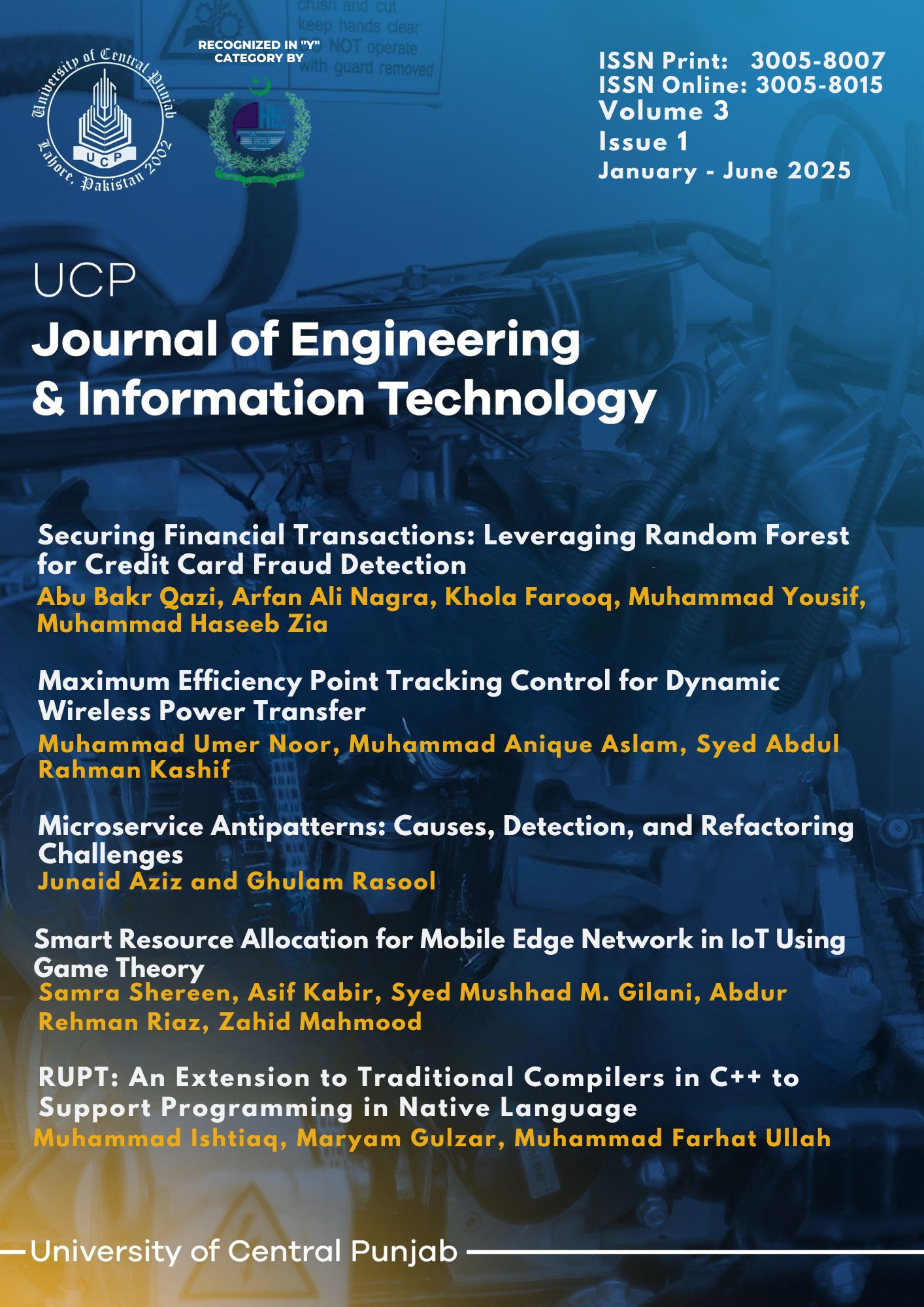Securing Financial Transactions: Leveraging Random Forest for Credit Card Fraud Detection
DOI:
https://doi.org/10.24312/ucp-jeit.03.01.444Keywords:
Random Forest Algorithm, Ensemble Learning, Credit Card, Defence Fortification, FraudAbstract
It is a crucial responsibility in the financial sector to safeguard clients and businesses against financial losses by verification of credit cards. It is demonstrated that machine learning algorithms like random forest methods can detect fraud. Multiple decision trees are used in the Random Forest to create predictions. It is very suitable for fraud detection in credit card fraud due to its prowess with high-dimensional and huge datasets. With the help of training on labelled data and performance analysis, the Random Forest algorithm can accurately detect fraudulent transactions and help decrease financial risks. Due to its features of interpretability and durability against overfitting, it is well well-suited tool for firms wanting to improve their fraud detection systems due to. With the use of the strengths of the Random Forest algorithm, accurate analysis and categorization of complex patterns and minute abnormalities present in credit card transactions has become feasible. This strategy helps in the efficient and on-time identification of potential dangers which enables proactive measures to guard against fraudulent activity and increases the accuracy of detection. With this advantage of Random forests, institutions of finance can get an in-depth analysis of the causes that impact fraud incidents and enable them to enhance and improve their security systems. Despite of shifting dynamics of transactions and fraud strategies, the model can tackle overfitting and guarantees reliable performance. Therefore, with the addition of the Random Forest algorithm into card fraud detection frameworks, enterprises acquire the ability to strengthen their defence system and enhance the security and trust of both their clients and the overall financial ecosystem.
Downloads
Published
Issue
Section
License
Copyright (c) 2025 UCP Journal of Engineering & Information Technology

This work is licensed under a Creative Commons Attribution 4.0 International License.





